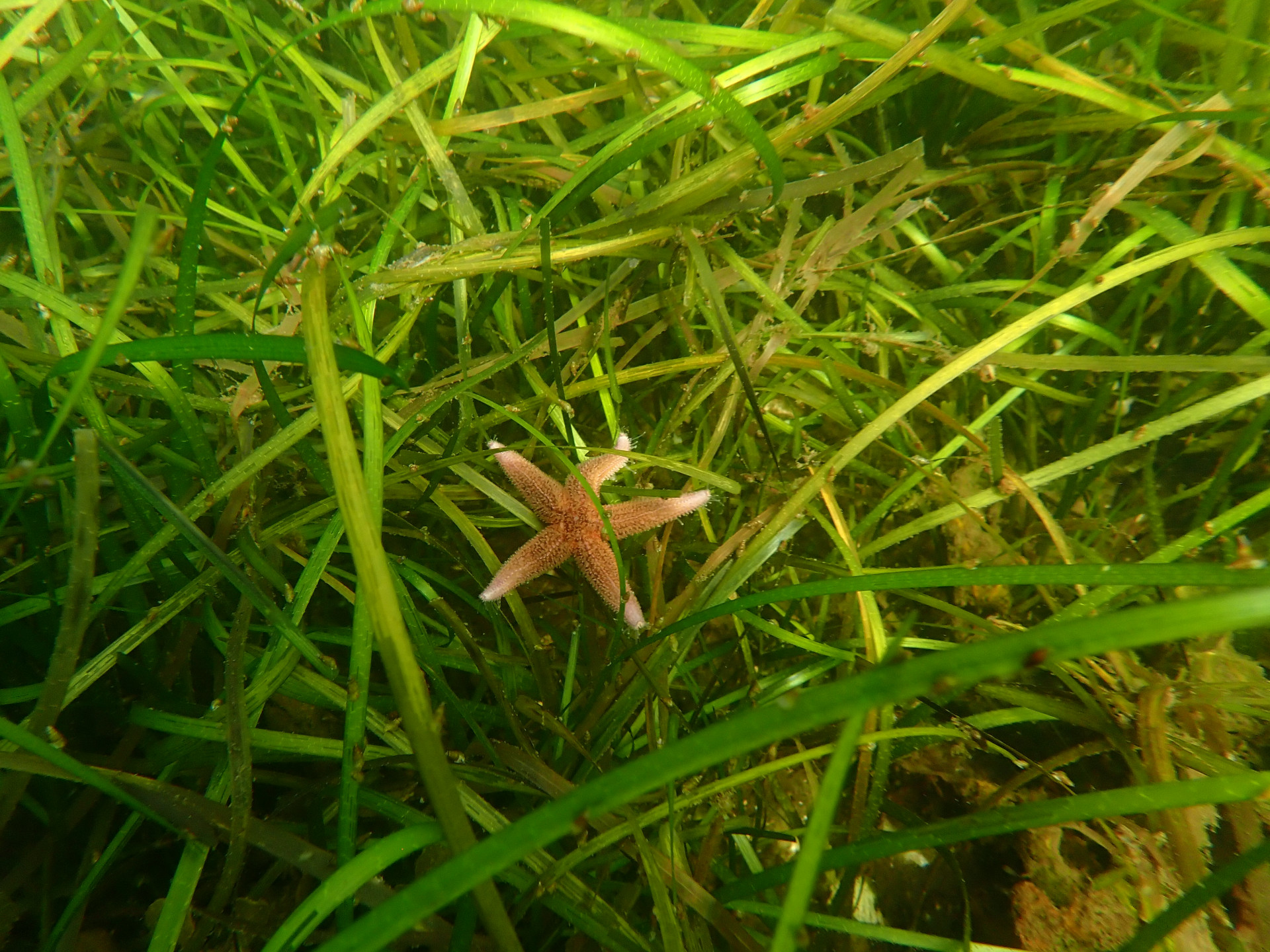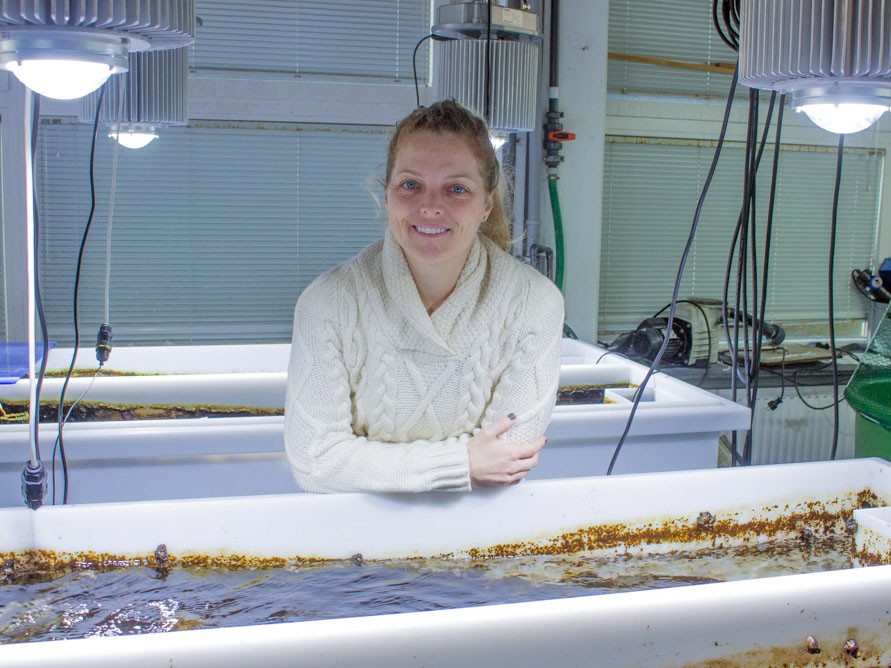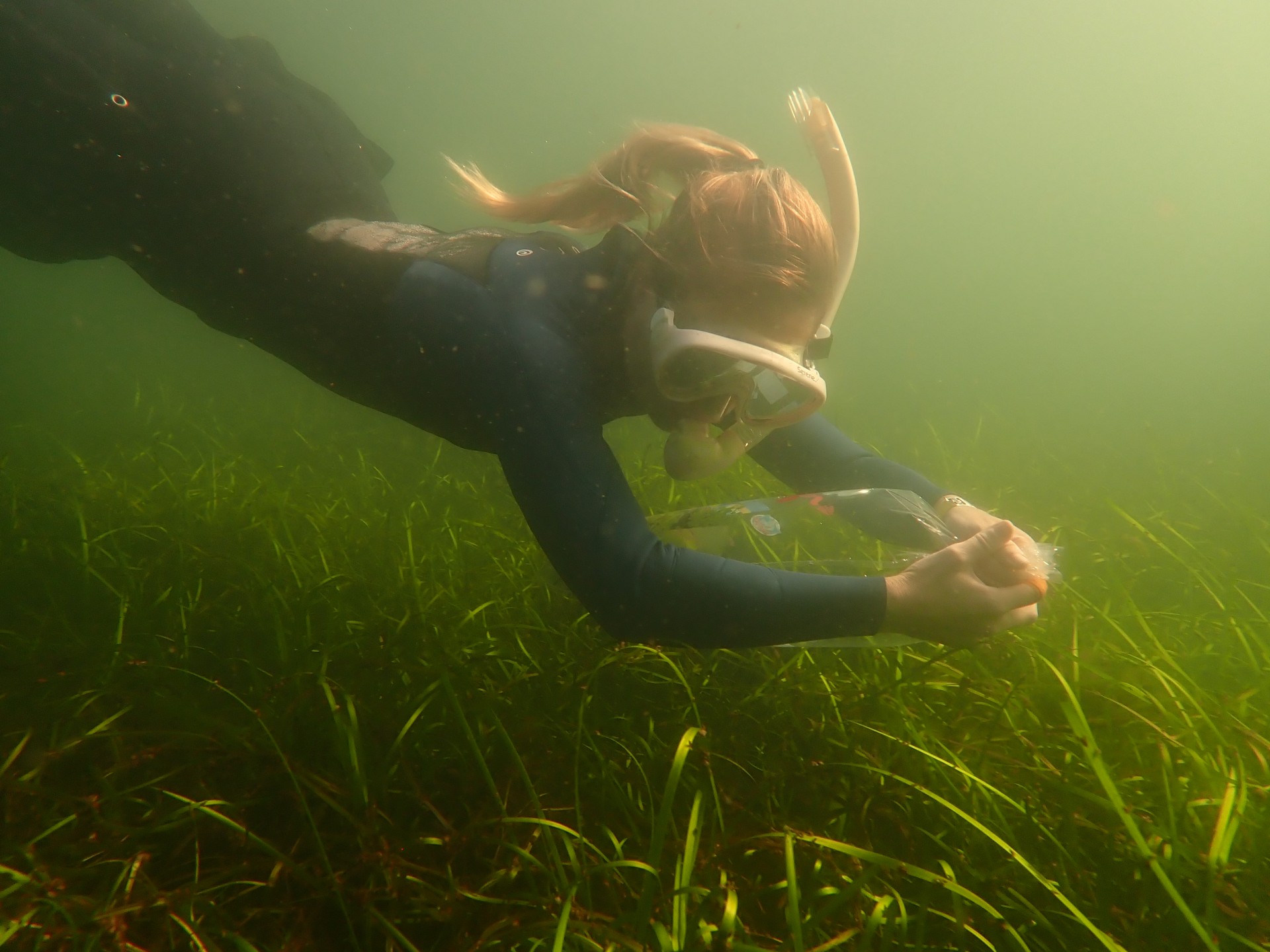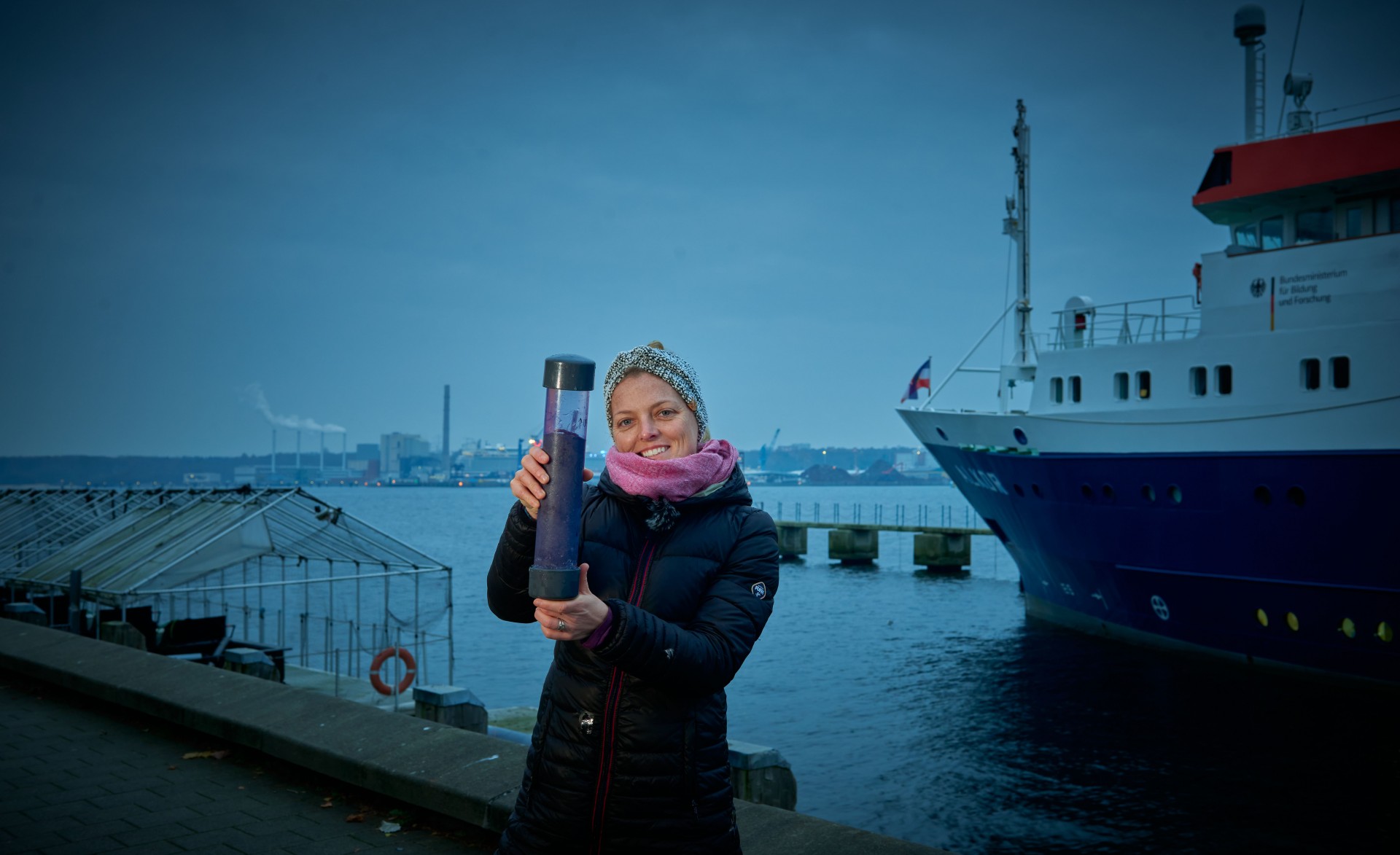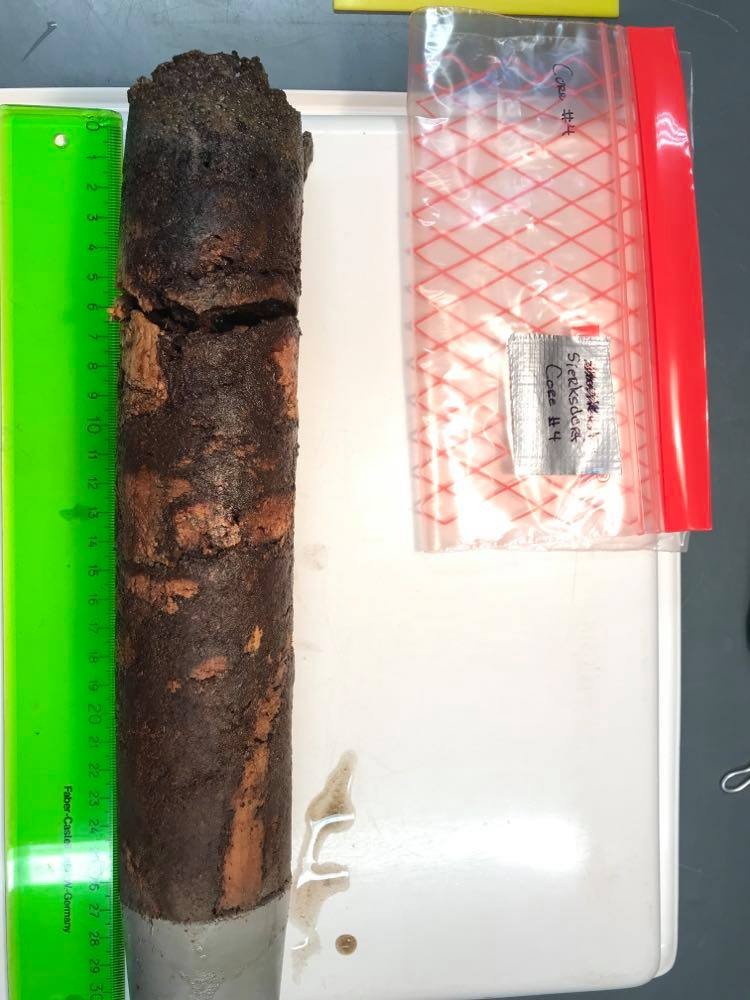Carbon-Hotspots in the Baltic Sea
How seagrass can help to remove carbon dioxide from the atmosphere
Oceans are among the largest carbon stores on our planet. An important factor are marine plants such as seagrass meadows, mangrove forests and salt marshes, which sequester carbon in the soil. In the German Baltic Sea, for example, seagrass meadows currently store around 3 to 12 megatons. This is significantly more than was previously known, as the first results from Dr. Angela Stevenson from GEOMAR Helmholtz Center for Ocean Research Kiel show.
In der deutschen Ostsee besiedeln Seegraswiesen eine Fläche von knapp 300 Quadratkilometern. Sie schützen den Meeresboden und verhindern damit, dass der im Boden gebundene Kohlenstoff in den Ozean gelangt. Die Pflanzen können dadurch 29 bis 56 Kilotonnen Kohlendioxid pro Jahr binden. Um den genauen Kohlenstoffbestand in Seegraswiesen zu bestimmen, hat Dr. Angela Stevenson im Rahmen der Helmholtz-Klima-Initiative Meeresbodenproben an verschiedenen Stellen entlang der gesamten deutschen Ostseeküste gesammelt und analysiert: „Unsere vorläufigen Ergebnisse zeigen, dass hier sehr viel Kohlenstoff gespeichert ist, deutlich mehr als zuvor bekannt war. Die Sedimente unter Seegraswiesen sind zwei- bis sechzigmal so reich an organischem Kohlenstoff wie Sedimente ohne Seegras.“
Seegraswiesen, die vor Wellen geschützt waren, konnten mehr organischen Kohlenstoff speichern, weil der Meeresboden weniger Bewegung ausgesetzt war. Zudem konnte das GEOMAR-Team eine weitere unerwartete Entdeckung machen: „Wir haben auf unseren Tauchgängen an einigen Stellen regelrechte Hotspots gefunden, in denen 50-mal mehr organischer Kohlenstoff gespeichert war, als im bloßen Sediment“, sagt Stevenson. „Wir haben eigentlich mit niedrigen Werten gerechnet, weil das Seegras hier starken Wellenaktivitäten ausgesetzt ist.“ Wieso sich diese Hotspots bilden, will die Meeresforscherin nun herausfinden: „Sie können nicht allein durch Wellenexposition oder Meerwassertiefe erklärt werden.“ Die Wissenschaftler*innen haben in manchen Sediment-Proben auch erstaunlicherweise gut erhaltene Holzstücke gefunden. Diese könnten aus früheren Zeiten stammen, bevor Seegras an diesen Stellen gewachsen ist, möglicherweise sogar bevor der Meeresspiegel nach der Eiszeit anstieg. „Das ist aber erstmal nur eine Hypothese“, sagt Stevenson. „Wir müssen unsere Proben noch datieren, um zu wissen, aus welcher Zeit das terrestrische Material stammt.“
Seagrass meadows and other marine plants store carbon very efficiently and thus make an important contribution to reducing carbon dioxide emissions. In the "SeaStore" project funded by the Federal Ministry of Education and Research (BMBF), GEOMAR is therefore developing techniques to restore and expand the habitats of seagrass meadows along the entire German Baltic Sea coast. On the coast of Schleswig-Holstein, for example, that would be an area of around 450 square kilometers that could be populated with seaweed.
“With the data from our project in the Helmholtz Climate Initiative, we can identify locations that could store a lot of carbon and specifically plant seagrass here,” says Stevenson. In the future, non-scientists could also participate in the protection of the meadows: “For example, we want to involve the many amateur divers in Germany to monitor the health of the newly restored seagrass meadows and help with seagrass planting – a kind of underwater community gardening."
Angela Stevenson im Interview
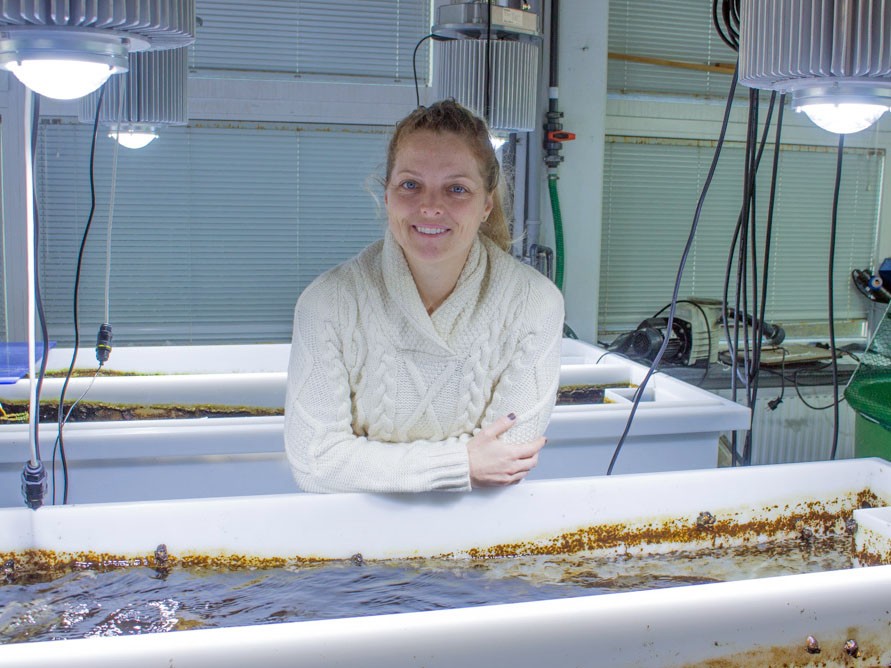

Frau Stevenson, wie wichtig sind Seegraswiesen für den Ozean?
Sie halten den Meeresboden zusammen, denn ihre komplexen Wurzeln und Wurzelstämme verhindern, dass Wasserbewegungen diesen aufwühlen. So entstehen schlammige, nahezu sauerstofflose Sedimente. Diese hemmen die Mikroorganismen daran, den im Boden gespeicherten Kohlenstoff in seine Einzelteile zu zerlegen. Dabei würde Kohlendioxid, also CO2, entstehen, das in den Ozean gelangen würde.
Speichert der Meeresboden unter Seegraswiesen mehr Kohlenstoff als der Meeresboden anderswo?
Ja, unsere Proben haben gezeigt, dass die Sedimente unter Seegraswiesen zwei- bis sechzigmal so reich an organischem Kohlenstoff sind wie Sedimente ohne Seegras. Dabei haben wir mehr organischen Kohlenstoff in Seegraswiesen gefunden, die vor Wellen geschützt sind. Auf der Grundlage vorheriger Messungen außerhalb Deutschlands können wir ungefähr sagen, dass ein Quadratmeter Meeresboden unter Seegras etwa 27 bis 52 Gramm organischen Kohlenstoff pro Jahr speichert.
Wieviel CO₂ kann Seegras speichern und wieviel speichern sie jetzt schon?
Seegraswiesen besiedeln in der deutschen Ostsee eine Fläche von 285 km2 und können dort 29 bis 56 Kilotonnen CO2 pro Jahr festsetzen.
Derzeit sind 3 bis 12 Megatonnen organischer Kohlenstoff in Sedimenten mit einer Tiefe von 25 bis 100 cm gespeichert. Das entspricht 11,5 bis 46 Megatonnen CO2.
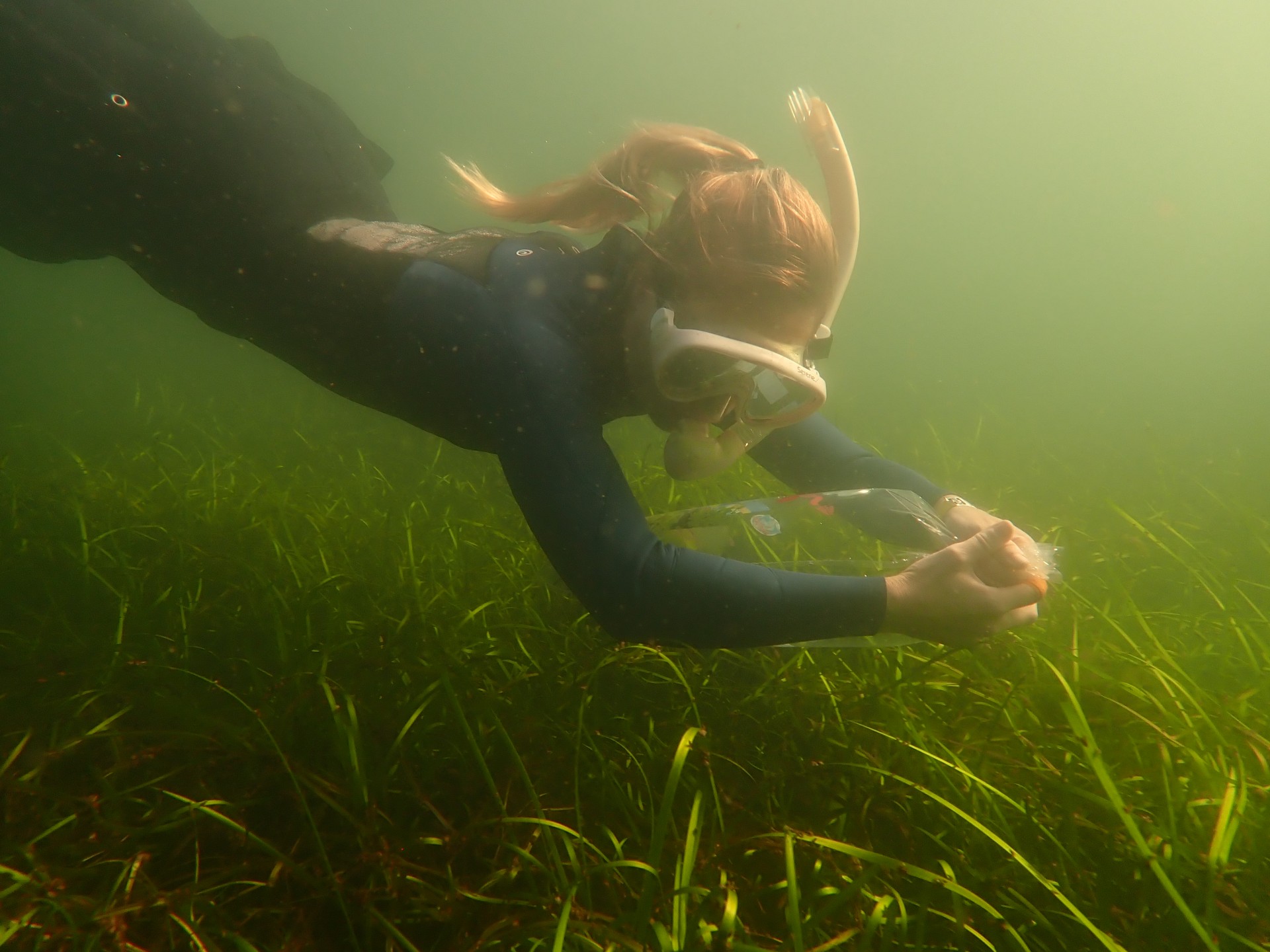
Woher kommt der Kohlenstoff im Meeresboden?
Einen Großteil des CO2 nimmt das Seegras während der Photosynthese auf. Ein anderer Teil kommt aus Organismen, die in diesen Systemen leben und CO2 aufnehmen. Wenn sie sterben, sinken sie auf den Meeresboden, wo das CO2 als Kohlenstoff gespeichert wird. Wiederum ein anderer Teil stammt aus Partikeln wie Plankton, die die dichten Seegrasblätter auffangen. Wir haben erstaunlicherweise gut erhaltene Holzstücke in einigen Proben gefunden, die darauf hindeuten können, dass es im Meeresboden auch Kohlenstoff aus terrestrischen Vorräten geben könnte.
Welche Faktoren beeinflussen, wieviel CO2 Seegraswiesen aufnehmen?
Die Speicherfähigkeit von Seegraswiesen hängt von mehreren Faktoren ab, zum Beispiel davon wie tief das Wasser ist oder wie sehr die Pflanzen Wellenbewegungen ausgesetzt sind. Starke Bewegungen rühren den Boden auf und legen den vergrabenen Kohlenstoff frei.
Auch die Wasserqualität hat einen großen Einfluss auf die CO2-Aufnahme: Durch trübes Wasser dringt weniger Sonnenlicht zum Meeresboden vor. Ohne diese Lichtenergie kann das Seegras weniger CO2 durch Photosynthese aufnehmen. Das beeinträchtigt auch die Gesundheit und das Wachstum der Pflanzen.

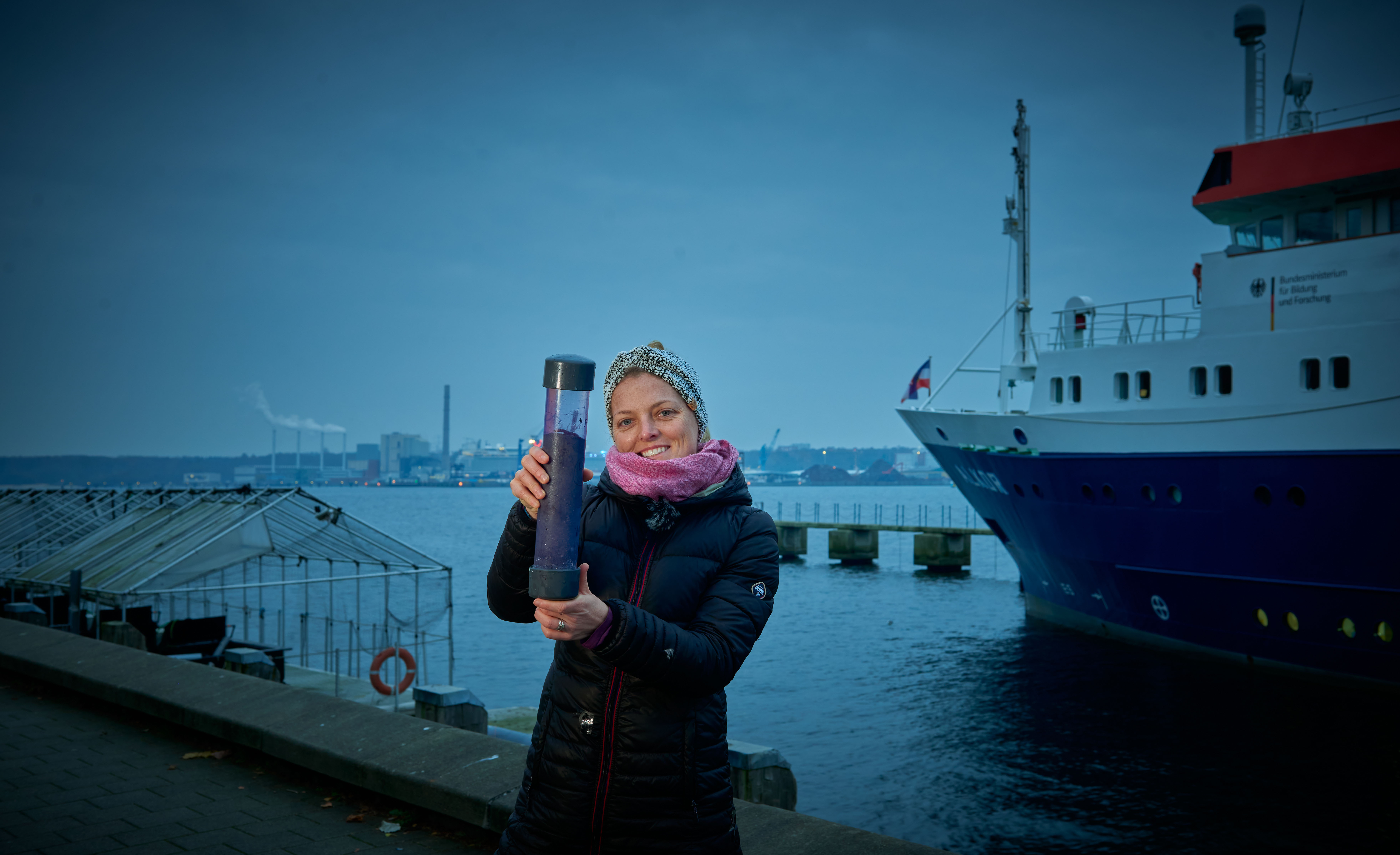
Wie beurteilen Sie den aktuellen Zustand der Seegraswiesen in der deutschen Ostsee als Kohlenstoffspeicher?
Unsere vorläufigen Ergebnisse zeigen, dass an der deutschen Ostseeküste sehr viel Kohlenstoff in Seegraswiesen gespeichert ist, deutlich mehr als zuvor bekannt war. Interessanterweise haben wir auf unseren Tauchgängen in einigen Buchten unerwartet hohe organische Kohlenstoffvorräte unterhalb von Seegraswiesen gefunden.
Die Pflanzen sind an diesen Standorten einer hohen Wellenaktivität ausgesetzt, sodass wir eigentlich mit niedrigen Werten gerechnet haben. Stattdessen haben wir regelrechte Hotspots gefunden. In denen war im Vergleich zum bloßen Sediment 50-mal mehr Kohlenstoff gespeichert.
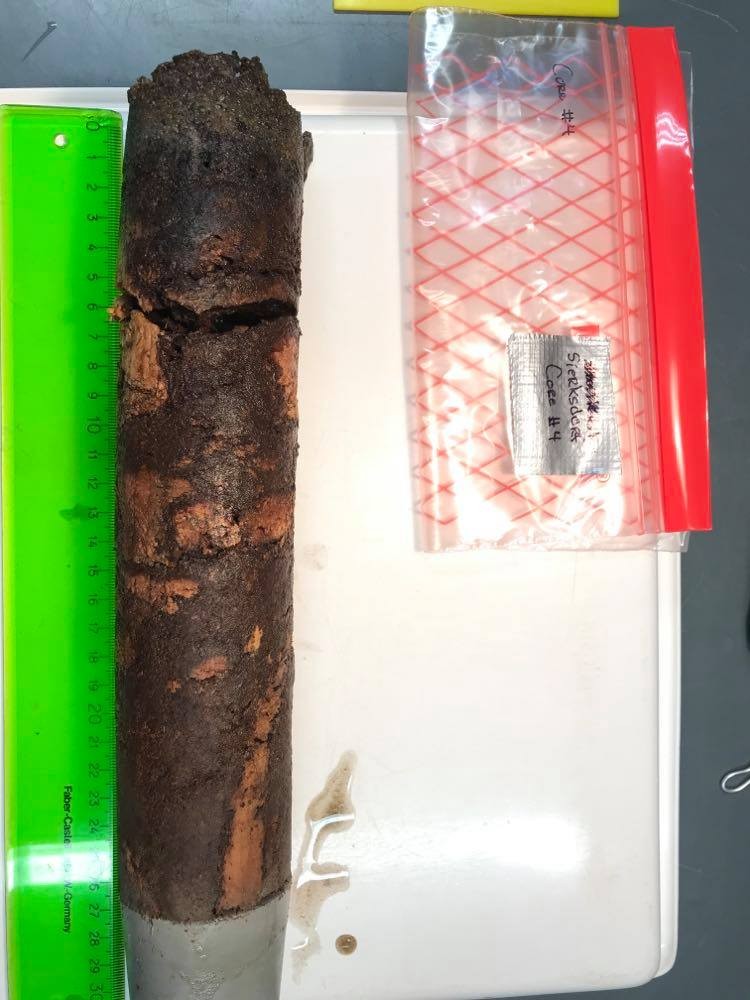
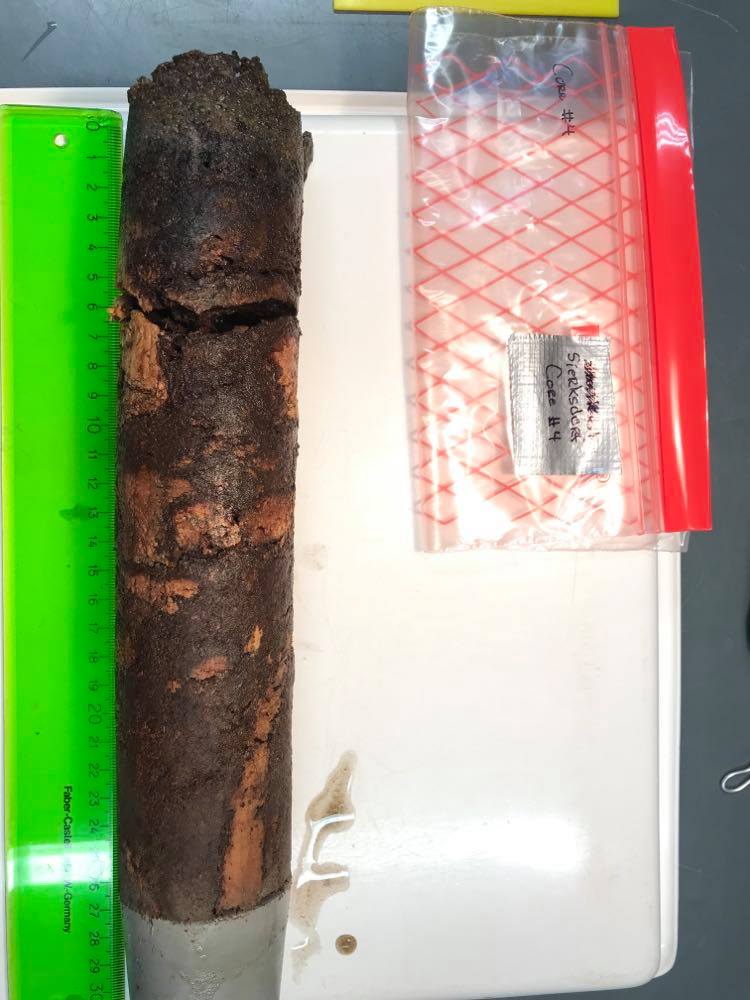
Was könnten die Ursprünge dieser Hotspots sein?
Das wollen wir noch herausfinden. Diese unerwarteten Hotspots für organischen Kohlenstoff können nicht allein durch Wellenexposition oder Meerwassertiefe erklärt werden. Wie bereits erwähnt, haben wir in manchen Sediment-Proben auch gut erhaltene Holzstücke gefunden. Das ist typisch für torfbildende Lebensräume.
Deshalb vermuten wir, dass hier im Boden auch terrestrische Einflüsse wirken. Diese könnten sich in früheren Zeiten entwickelt haben, bevor hier Seegras gewachsen ist, möglicherweise sogar bevor der Meeresspiegel nach der Eiszeit anstieg. Das ist aber erstmal nur eine Hypothese. Wir müssen unsere Proben noch datieren, um zu wissen, aus welcher Zeit das terrestrische Material stammt.
Wie können wir Seegraswiesen als Kohlenstoffspeicher schützen und verbessern?
Zusammen mit nationalen Partnern entwickeln wir am GEOMAR im BMBF-Projekt "SeaStore" Techniken, um Seegraswiesen wiederherzustellen. Mit den Daten aus unserem Projekt in der Helmholtz-Klima-Initiative können wir Standorte erkennen, die viel Kohlenstoff speichern könnten. Wir hoffen zum Beispiel junge Triebe von gesunden Wiesen in Gebieten anzupflanzen, in denen das Seegras verschwunden ist. Wir möchten letztendlich alle möglichen Lebensräume von Seegraswiesen entlang der gesamten deutschen Ostseeküste wiederherstellen. An der Küste von Schleswig-Holstein zum Beispiel wäre das eine Fläche von ca. 448 km2.
Können auch Nicht-Wissenschaftler*innen etwas für den Erhalt der Seegraswiesen tun?
An einer solchen Idee arbeiten wir gerade. Wir wollen zum Beispiel die vielen Amateur-Taucher*innen in Deutschland dabei einbeziehen, die Gesundheit der neu restaurierten Seegraswiesen zu überwachen und beim Anpflanzen von Seegras zu helfen – wir sehen das als eine Art Unterwasser-Gemeinschaftsgarten.
